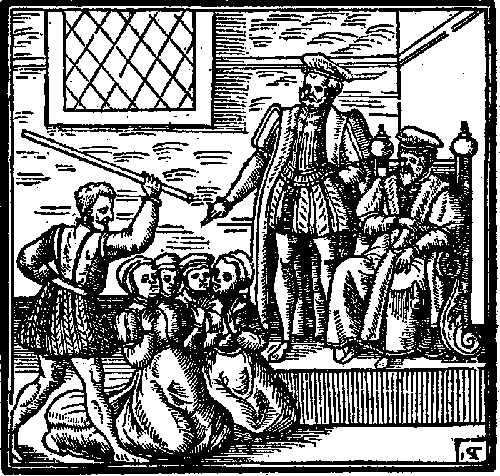Daemonologie
Daemonologie (in full Daemonologie, In Forme of a Dialogue, Divided into three Books: By the High and Mighty Prince, James &c.) was first published in 1597 by King James VI of Scotland (later also James I of England) as a philosophical dissertation on contemporary necromancy and the historical relationships between the various methods of divination used from ancient black magic. It was reprinted again in 1603 when James took the throne of England.
This included a study on demonology and the methods demons used to bother troubled men. It also touches on topics such as werewolves and vampires. It was a political yet theological statement to educate a misinformed populace on the history, practices and implications of sorcery and the reasons for persecuting a witch in a Christian society under the rule of canonical law.
The book
King James wrote a dissertation titled Daemonologie that was first sold in 1597, several years prior to the first publication of the King James Authorized Version of the Bible. Within three short books James wrote a philosophical dissertation in the form of a Socratic dialogue for the purpose of making arguments and comparisons between magic, sorcery and witchcraft, but wrote also his classification of demons.
In writing the book, King James was heavily influenced by his personal involvement in the North Berwick witch trials from 1590. Following the execution of a notorious sorcerer in the year 1591, the news of the trials was narrated in a news pamphlet titled Newes from Scotland and was included as the final chapter of the text.
As detailed in his preface, the main sources of this work were that of historically confessed witches, judicial case history and the Bible itself. He also amassed various dissertations on magical studies to expand his education on the relationships between infernal spirits and men. James generally sought to prove that the devilish arts have always been yet still are, but also explains the justification of a witch trial and the punishments which a practitioner of the dark arts merits.
Influence
Daemonologie assisted in the creation of witchcraft reform, heavily inspiring Richard Bernard in writing a manual on witch-finding in 1629 titled A Guide to Grand-Jury Men, which advised judicial trial procedure to take a stronger investigative approach to acquiring and analyzing evidence and obtaining witnesses to be present during witchcraft trials.
There was also an influence on Matthew Hopkins in his work as a witch-finder between 1644 and 1646 in which an estimated 300 witches were tried and executed. In the year of Hopkins' death, 1647, he published The Discovery of Witches which directly cited Daemonologie as a source for creating methods in discovering a witch.
The 17th century grimoire Book of Magical Charms includes passages taken from Daemonologie.
This book is believed to be one of the main sources used by William Shakespeare in the production of Macbeth. Shakespeare attributed many quotes and rituals found within the book directly to the Weird Sisters, yet also attributed the Scottish themes and settings referenced from the trials in which King James was involved.
